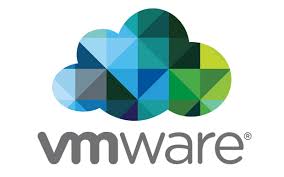
VMWARE VSPHERE: INSTALL, CONFIGURE, MANAGE [V6.7]
Course Overview
This five-day course features intensive hands-on training that focuses on installing, configuring, and managing VMware vSphere 6.7, which includes VMware ESXi 6.7 and VMware vCenter Server 6.7. This course prepares you to administer a vSphere infrastructure for an organization of any size.
This course is the foundation for most of the other VMware technologies in the software-defined data center.

Course Objectives
By the end of the course, you should be able to meet the following objectives:
- Describe the software-defined data center
- Explain the vSphere components and their function in the infrastructure
- Add ESXi hosts to a VMware vCenter Server Appliance instance
- Manage vCenter Server Appliance
- Use a local content library as an ISO store, and deploy a virtual machine
- Describe vCenter Server architecture
- Use vCenter Server to manage an ESXi host
- Configure and manage vSphere infrastructure with VMware Host Client and VMware vSphere Client
- Describe virtual networks with vSphere standard switches
- Configure standard switch policies
- Use vCenter Server to manage various types of host storage: VMware vSphere VMFS, NFS, iSCSI, and RDM
- Examine the features and functions of Fibre Channel and VMware vSAN
- Manage virtual machines, templates, clones, and snapshots
- Migrate virtual machines with VMware vSphere vMotion
- Migrate virtual machine storage with VMware vSphere Storage vMotion
- Monitor resource usage, and manage resource pools
- Discuss the VMware vSphere High Availability (vSphere HA) cluster architecture
- Configure vSphere HA
- Manage vSphere HA and VMware vSphere Fault Tolerance
- Use VMware vSphere Replication and VMware vSphere Data Protection to replicate virtual machines and perform data recovery
- Use VMware vSphere Distributed Resource Scheduler clusters to improve host scalability
- Use VMware vSphere Update Manager to apply patches and perform basic troubleshooting of ESXi hosts, virtual machines, and vCenter Server operations
- Identify troubleshooting methodology to logically diagnose faults and improve troubleshooting efficiency
Course Prequisites
- System administration experience on Microsoft Windows or Linux operating systems.
Target Audience
- System administrators
- System engineers
Course Outline
1. Course Introduction
- Introductions and course logistics
- Course objectives
- Describe the content of the course
- Gain a complete picture of the VMware certification system
- Familiarize yourself with the benefits of the VMware Education Learning Zone
- Identify additional resources
2. Introduction to vSphere and the Software-Defined Data Center
- Describe how vSphere fits into the software-defined data center and the cloud infrastructure
- Explain how vSphere interacts with CPUs, memory, networks, and storage
- Use vSphere Client to access and manage your vCenter Server system and ESXi host
- Compare virtual machine hardware version 14 to other versions
- Identify the virtual network adapters, and describe the enhanced VMXNET3
- Compare the types of virtual disk provisioning
- Install and configure ESXi host settings
- Identify the advantages of ESXi Quick Boot
3. Creating Virtual Machines
- Create, provision, and remove a virtual machine
- Explain the importance of VMware Tools
- Describe how to import a virtual appliance OVF template
4. vCenter Server
- Describe the vCenter Server architecture
- Discuss how ESXi hosts communicate with vCenter Server
- Access and configure vCenter Server Appliance
- Use vSphere Client to manage the vCenter Server inventory
- Add data center, organizational objects, and hosts to vCenter Server
- Create custom inventory tags
- Describe the rules for applying permissions
- Create a custom role in vCenter Server
- Create a vCenter Server Appliance backup schedule
- Restore vCenter Server Appliance from a backup
- Monitor vCenter Server Appliance
5. Configuring and Managing Virtual Networks
- Describe, create, and manage standard switches
- Configure virtual switch security, traffic-shaping and load-balancing policies
- Compare vSphere distributed switches and standard switches
- Describe the virtual switch connection types
- Describe the new TCP/IP stack architecture
- Use VLANs with standard switches
6. Configuring and Managing Virtual Storage
- Identify storage protocols and storage device types
- Discuss ESXi hosts using iSCSI, NFS, and Fibre Channel storage
- Create and manage VMware vSphere VMFS and NFS datastores
- Explain how multipathing works with iSCSI, NFS, and Fibre Channel storage
- Identify the advantages of VMware vSAN
7. Virtual Machine Management
- Use templates and cloning to deploy new virtual machines
- Modify and manage virtual machines
- Create an instant clone of a virtual machine
- Identify the types of content libraries and how to deploy and use them
- Add a hot-pluggable device
- Dynamically increase the size of a virtual disk
- Use customization specification files to customize a new virtual machine
- Perform vSphere vMotion and vSphere Storage vMotion migrations
- Create and manage virtual machine snapshots
8. Resource Management and Monitoring
- Discuss CPU and memory concepts in a virtualized environment
- Describe what overcommitment of a resource means
- Identify additional technologies that improve memory usage
- Configure and manage resource pools
- Describe methods for optimizing CPU and memory usage
- Use various tools to monitor resource usage
- Create and use alarms to report certain conditions or events
9. vSphere HA, vSphere Fault Tolerance, and Protecting Data
- Explain the vSphere HA architecture
- Configure and manage a vSphere HA cluster
- Use vSphere HA advanced parameters
- Enforce infrastructural or intra-app dependencies during failover
- Describe vSphere HA heartbeat networks and datastore heartbeats
- Examine the features and functions of vSphere Fault Tolerance
- Enable vSphere Fault Tolerance on virtual machines7 Virtual Machine Management
- Use templates and cloning to deploy new virtual machines
- Modify and manage virtual machines
- Create an instant clone of a virtual machine
- Identify the types of content libraries and how to deploy and use them
- Add a hot-pluggable device
- Dynamically increase the size of a virtual disk
- Use customization specification files to customize a new virtual machine
- Perform vSphere vMotion and vSphere Storage vMotion migrations
- Create and manage virtual machine snapshots
- Support vSphere Fault Tolerance interoperability with vSAN
- Examine enhanced consolidation of vSphere Fault Tolerance virtual machines
- Examine the features and functions of vSphere Replication
10. vSphere DRS
- Describe the functions of a vSphere DRS cluster
- Create a vSphere DRS cluster
- View information about a vSphere DRS cluster
- Configure virtual machine affinity, DRS groups, and VM-host affinity rules
- Remove a host from a vSphere DRS cluster
11. vSphere Update Manager
- Describe the architecture, components, and capabilities of vSphere Update Manager
- Use vSphere Update Manager to manage the patching of ESXi, virtual machines, and vApps
- Examine the features and functions of vSphere Update Manager EAM integration
- Integrate vSphere Update Manager with vSphere DRS
12. vSphere Troubleshooting
- Apply a troubleshooting methodology to logically diagnose faults and improve troubleshooting efficiency
- Review troubleshooting tools
- Find important log files
- Use vSphere Syslog Collector
What Our Students Have to Say


